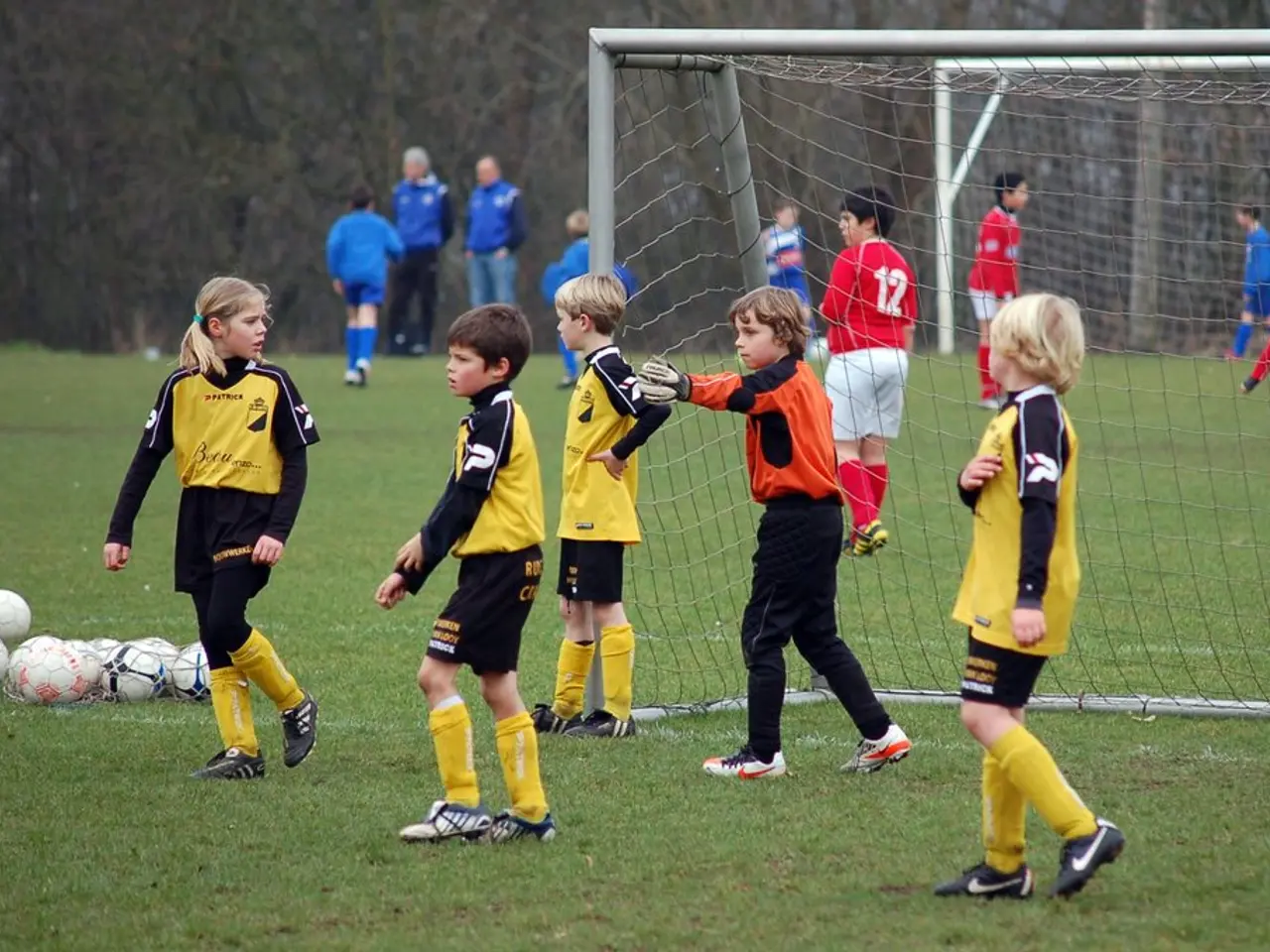Children's Guided Exploration of Newton's Laws
From the simple motion of a rolling ball to the mighty launch of a rocket, Newton's Laws of Motion play a crucial role in our daily lives. These fundamental principles in physics can now be easily understood and explored by elementary and middle school students through a series of hands-on experiments.
One such experiment is the Bottle Rocket Launch, which vividly demonstrates Newton's Third Law (for every action, there is an equal and opposite reaction). By using an empty soda bottle, water, and air pressure, students can create a small rocket launch, observing how the water is forced downward, propelling the bottle upward.
Another engaging activity is the Domino Chain Reaction, which illustrates energy transfer and inertia, related to Newton's First Law (an object at rest stays at rest unless acted upon by a force). Setting up dominoes to knock each other down provides a visual representation of how forces can set objects in motion and keep them moving.
The Paper Bridge Weight Test offers insights into concepts of force and load distribution, linking to Newton's laws about forces affecting motion and stability. By building a bridge from paper across two supports and adding coins until it collapses, students can experiment with the effects of different weights on a structure.
Middle schoolers can design a miniature roller coaster with the Roller Coaster Model to investigate gravity, acceleration, and momentum, directly applying Newton's Second Law (force equals mass times acceleration).
The Balloon Rocket Experiment and the Balloon Bounce Experiment are other simple yet effective demonstrations of Newton's Third Law. In the Balloon Rocket Experiment, students witness action-reaction forces as they let a balloon fly, while in the Balloon Bounce Experiment, they observe how the tennis ball bounces higher due to the reaction of the basketball's bounce.
The "Snowball" Launcher experiment provides an opportunity to explore how a force propels an object and how the acceleration of an object depends on the force applied. Meanwhile, the Popsicle Stick Catapult activity demonstrates Newton's Second Law, as adding more force increases acceleration, especially for lighter objects like marshmallows.
The Film Canister Rocket experiment is a fun and accessible way to illustrate Newton's Third Law, as the action of gas pushing down results in the reaction of the canister moving upwards when the lid pops off.
These experiments, which can be carried out using everyday materials, offer clear, practical demonstrations of Newton's Laws of Motion suited to different age levels. They support active learning through direct observation of force, motion, and energy transfer, making these physics concepts engaging and accessible for young learners.
In addition to these experiments, resources such as Science Vocabulary worksheets, DIY science kits, and science tools for kids, as well as the Scientific Method for Kids, can further support understanding and exploration of these fundamental principles. Citizen Science Guide also offers opportunities for kids to participate in real scientific research projects.
By engaging with these experiments and resources, children can better understand how forces impact our daily lives and appreciate the intricate workings of the physical world around us.
- Elementary school students can easily comprehend Newton's Laws of Motion through a series of hands-on experiments, such as the Bottle Rocket Launch and the Domino Chain Reaction.
- The Paper Bridge Weight Test offers students an opportunity to experiment with force and load distribution, linking to Newton's laws about forces affecting motion and stability.
- Middle schoolers can design a miniature roller coaster with the Roller Coaster Model to investigate gravity, acceleration, and momentum, applying Newton's Second Law directly.
- Simple experiments like the Balloon Rocket Experiment and the Balloon Bounce Experiment demonstrate Newton's Third Law effectively, showing action-reaction forces at work.
- The Popsicle Stick Catapult activity demonstrates Newton's Second Law, as adding more force increases acceleration, especially for lighter objects like marshmallows.
- The "Snowball" Launcher experiment shows how a force propels an object and how the acceleration of an object depends on the force applied.
- The Film Canister Rocket experiment illustrates Newton's Third Law, as the action of gas pushing down results in the reaction of the canister moving upwards when the lid pops off.
- Resources such as Science Vocabulary worksheets, DIY science kits, and science tools for kids, as well as the Scientific Method for Kids, can further support understanding and exploration of these fundamental principles.
- Citizen Science Guide offers opportunities for kids to participate in real scientific research projects, enhancing their learning experience.
- Engaging with these experiments and resources can help children better understand how forces impact our daily lives and appreciate the intricate workings of the physical world around us, promoting lifelong learning through online education and science education-and-self-development activities.




